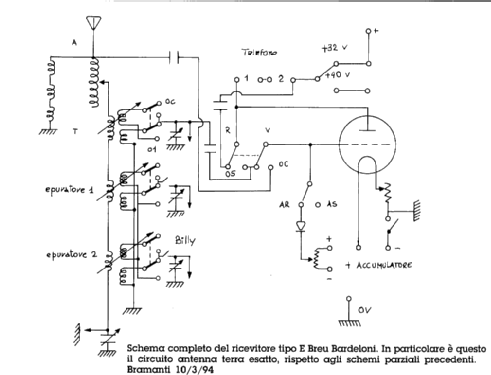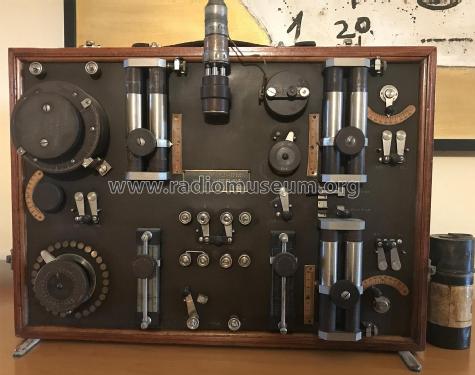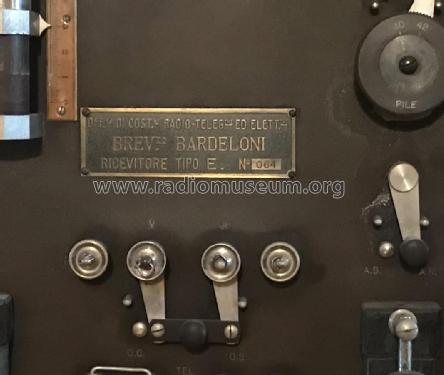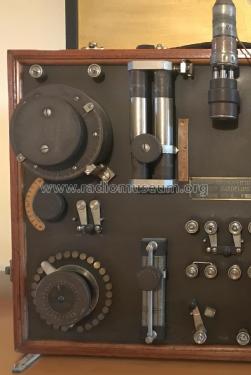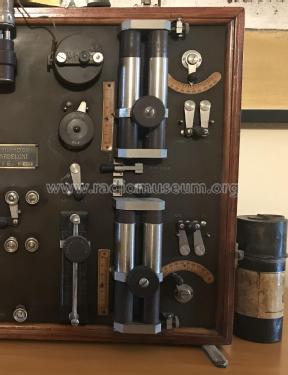Bardeloni Ricevitore Tipo E
MILITARY Italy (different makers for same equipm.)
- Land
- Italien / Italy
- Hersteller / Marke
- MILITARY Italy (different makers for same equipm.)
- Jahr
- 1915 ?
- Kategorie
- Militär-Empfänger
- Radiomuseum.org ID
- 305394
Klicken Sie auf den Schaltplanausschnitt, um diesen kostenlos als Dokument anzufordern.
- Anzahl Röhren
- 1
- Röhren
- Hauptprinzip
- Spezialschaltung (siehe Bemerkungen)
- Betriebsart / Volt
- AKKU-Speisung (für alles, z.B. bei Autoradios und Amateurgeräten)
- Lautsprecher
- - Für Kopfhörer oder NF-Verstärker
- Material
- Gerät mit Holzgehäuse
- von Radiomuseum.org
- Modell: Bardeloni Ricevitore Tipo E - MILITARY Italy different
- Form
- Reisegerät > 20 cm (netzunabhängig betreibbar)
- Bemerkung
-
Prof. Dr. Roberto Guidorzi:
The receiver was designed by Colonel Cesare Bardeloni, an engineer of the Italian Royal Engineer Corps during WW1, probably in 1915.Bardeloni was very interested in the application of radio communication techniques in the military field and most of his research and patents concerned the discrimination of a specific signal against other signals at the same frequency and disturbances.
To this purpose he tested the use of more antennas with different orientations directly inserted in the tuning circuits of a receiver. The “type E” receiver (by the way, it was probably the first radio receiver using an audion produced in Italy) included one of his inventions, i.e. a carborundum rectifier connected to the grid of the audion, endowed with a variable polarization circuit that could help in canceling low level disturbances.
He tested also the application of signals to the audion by means of capacitive links obtained by applying small metal plates to the side of the tube.
- Literaturnachweis
- Storia della radio in aviazione. Dalle origini al secondo dopoguerra by Giuseppe Pesce
- Autor
- Modellseite von Heribert Jung angelegt. Siehe bei "Änderungsvorschlag" für weitere Mitarbeit.
- Weitere Modelle
-
Hier finden Sie 17 Modelle, davon 9 mit Bildern und 4 mit Schaltbildern.
Alle gelisteten Radios usw. von MILITARY Italy (different makers for same equipm.)
